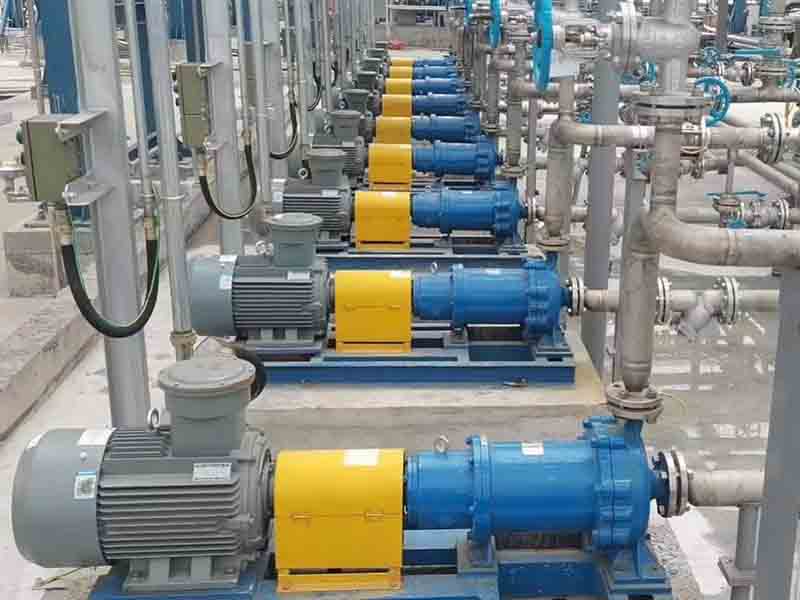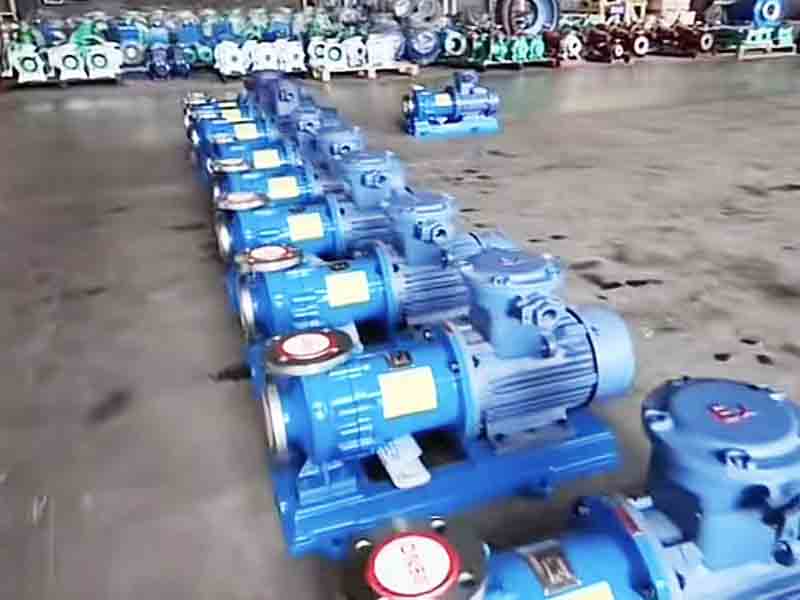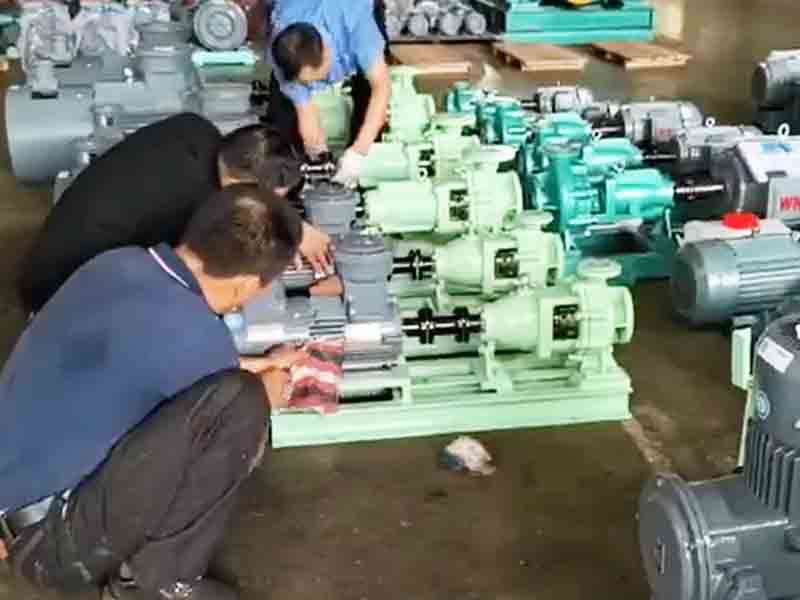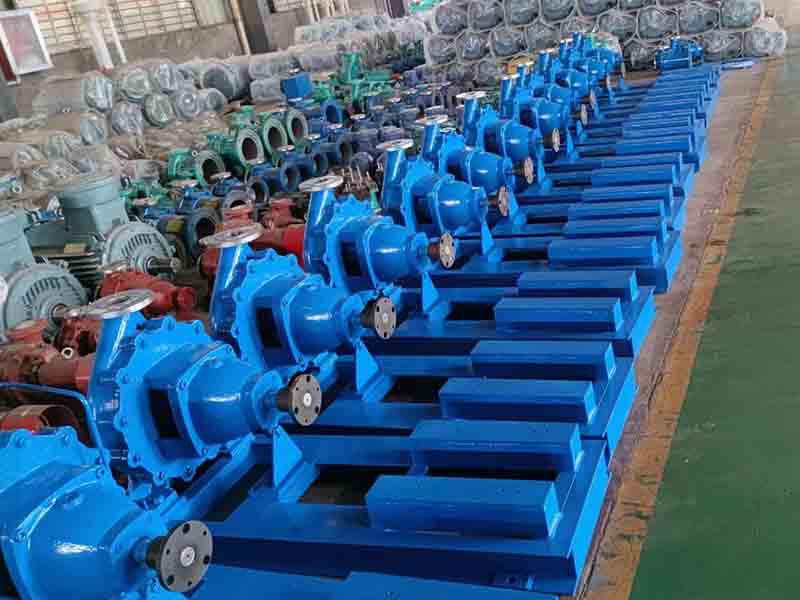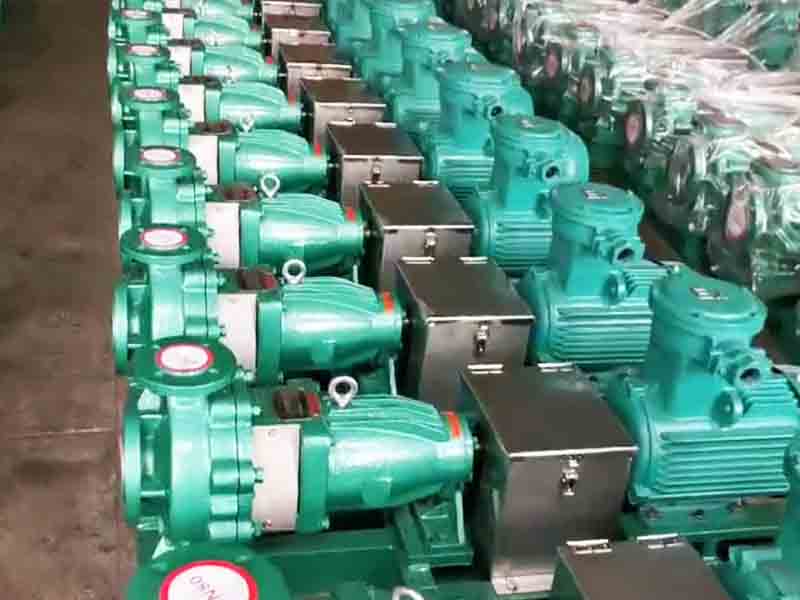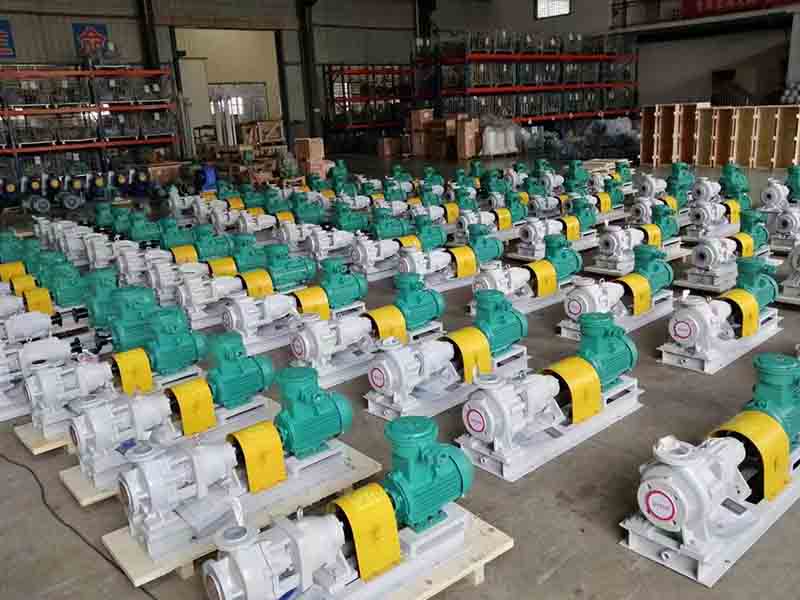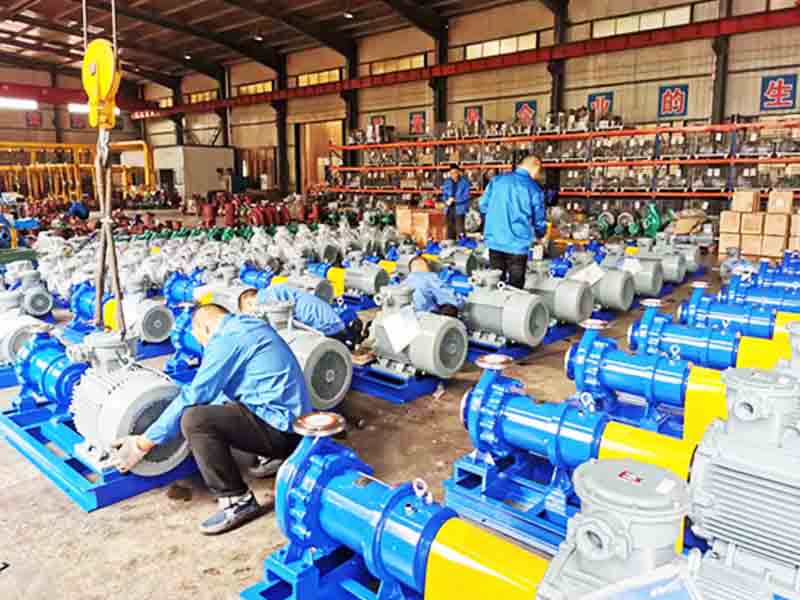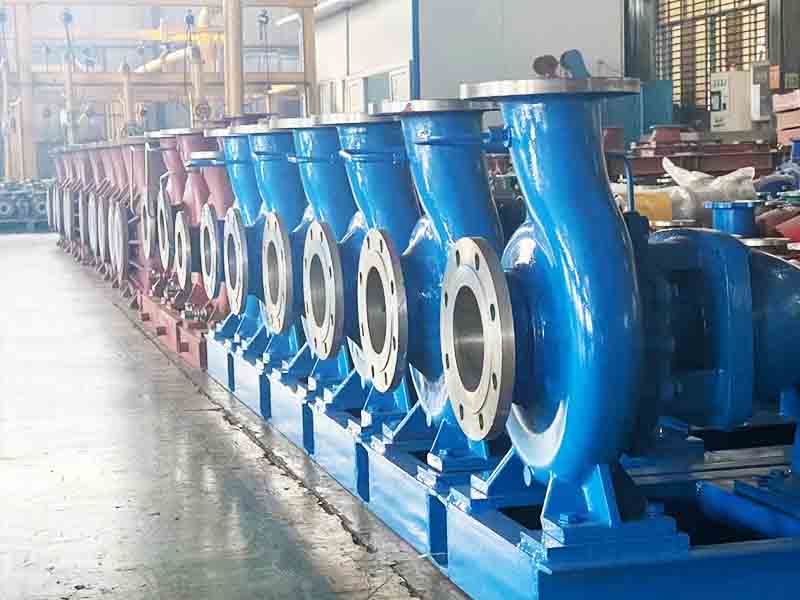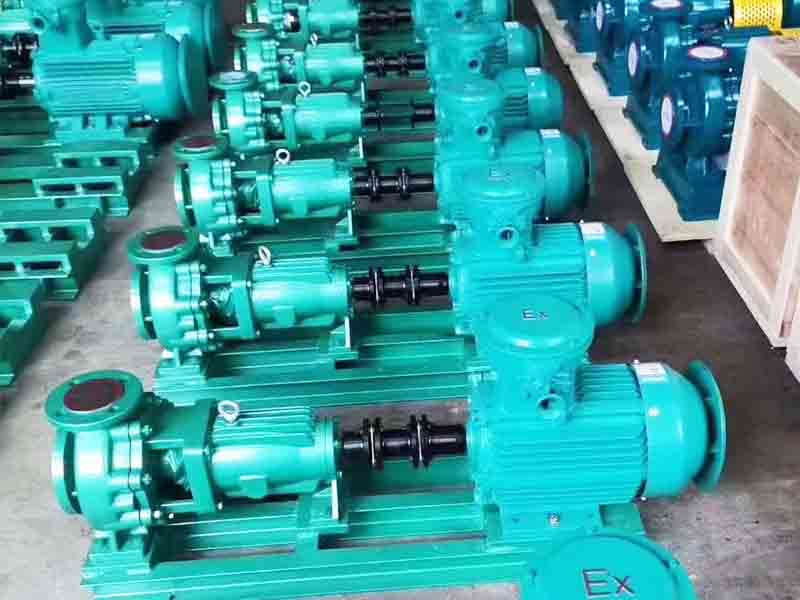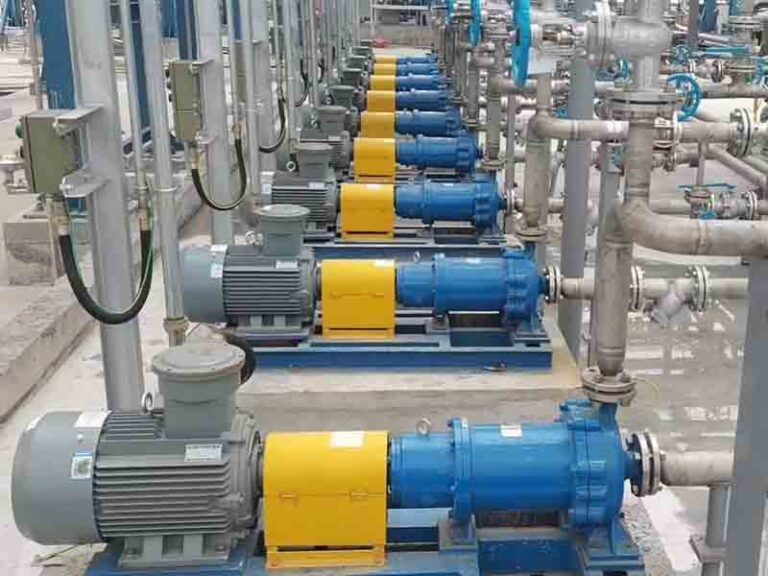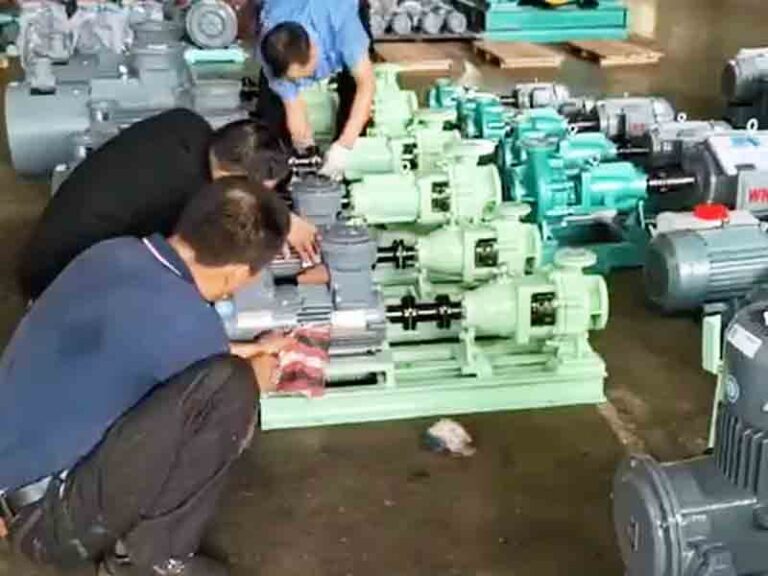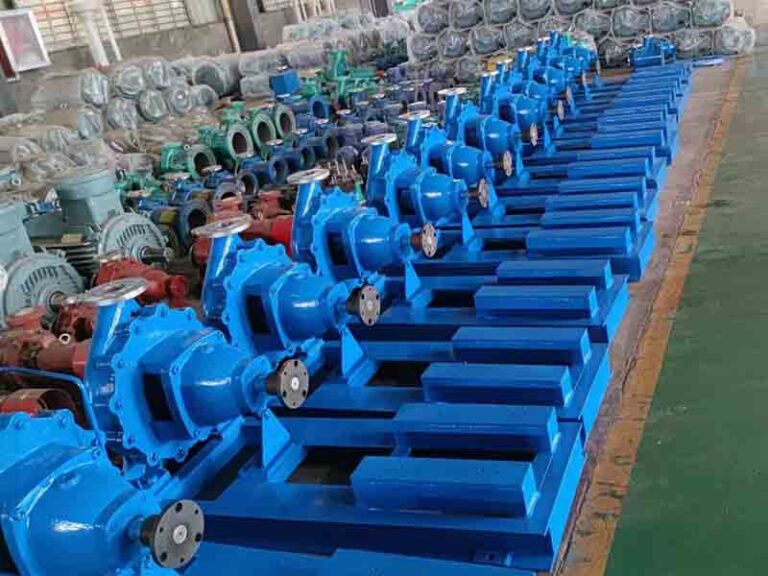Mud pumps play a crucial role in large-scale industrial drilling operations. From deep-sea oil platforms to land-based mines, mud pumps work continuously and steadily to ensure the smooth progress of the drilling process. In this article, we will discuss the mud pump in depth, covering its definition, components, working principle, types, advantages and disadvantages, application areas and selection principles.
What Is a Mud Pump
A mud pump is a reciprocating pump whose main function is to circulate fluid (mud) through the well during the drilling process. Its working principle is based on carrying rock chips generated during drilling back to the surface by circulating the mud. This equipment is widely used in oil and gas drilling operations and also plays an important role in the field of water well drilling. Mud pumps are an indispensable key equipment for both the exploitation of oil and gas resources deep underground and the drilling of water wells for industrial, agricultural and domestic use.
Typical Components of a Mud Pump
Power End
Component composition: The power end of a mud pump contains a number of key components such as the frame, crankshaft, connecting rods, crossheads, and other support structures. These components work together to form a sophisticated power transmission system.
Power Transmission Mechanism: The power end is like the “power heart” of the mud pump, which is responsible for converting and transferring the external input power, usually from the motor, to the fluid end. The crankshaft is driven by the motor to do rotary motion, and the rotary motion is transformed into the linear reciprocating motion of the crosshead through the connecting rod, which in turn provides power support for the work of the fluid end.
Fluid End
Key components: The fluid end consists mainly of piston or plunger assembly, valve assembly, bushing and pulsation damper. These components cooperate with each other to realize the efficient pumping of mud.
Pumping Principle: The fluid end accurately converts the rotary motion from the power end into reciprocating linear motion of the piston or plunger. During the reciprocating motion of the piston or plunger, the mud is sucked in and discharged, thus realizing the mud pumping process. The pulsation damper plays a role in stabilizing the mud flow and reducing pressure fluctuations to ensure the smoothness of the pumping process.
Piston or Plunger
Type difference: Mud pumps are usually available with both piston and plunger reciprocating motion components. Piston components are more common in some traditional slurry pumps, while the plunger components are excellent in some of the sealing and pressure requirements of the higher occasions.
Pumping action: The piston or plunger is mounted inside the cylinder liner, and they generate pressure changes by reciprocating back and forth inside the liner. When moving backward, negative pressure is formed and mud is sucked into the pump chamber; when moving forward, mud is pressurized and pushed out, thus realizing the pumping of mud to the borehole.
Valves
Valve Function: Mud pumps are equipped with suction (inlet) and discharge (outlet) valves. The main role of these valves is to control the unidirectional flow of mud to ensure that the mud can only flow in accordance with the predetermined direction, to prevent backflow of mud, so as to ensure the stability and efficiency of the pumping process.
Valve types: common types of mud pump valves include flap valves, plate valves and piston valves. Different types of valves are suitable for different working conditions and slurry characteristics, such as flap valves in some of the flow requirements of higher occasions more commonly used, while the plate valve in the high-pressure environment shows better sealing performance.
Bushings
Sealing Activity: A bushing is a replaceable sleeve fitted to the fluid end of a pump that forms a seal between the piston or plunger and the cylinder wall. The presence of the liner can effectively prevent mud leakage and ensure that the pressure is maintained during the pumping process.
Maintenance and Replacement: Due to the large number of particles often contained in the slurry, the bushings are subject to wear and tear over a long period of time. Therefore, the liner is designed as a replaceable part so that it can be replaced when it is worn to a certain extent to ensure the normal operation of the mud pump.
Pulsation Damper
Working Principle: The pulsation damper reduces pressure fluctuations during mud pumping by storing and releasing energy. It absorbs the pulsation energy generated by the reciprocating motion of the piston or plunger, resulting in a smoother flow of mud.
Benefits to the system: A steady flow of mud helps to reduce wear and tear throughout the system, extending the life of the equipment. It also improves the overall performance of the mud Pump and ensures smooth drilling operations.
Inlet and Outlet Connections
Inlet Connection: The inlet connection of the mud pump is used to bring mud from the mud tank into the pump. This connection part needs to have good sealing to prevent mud leakage, and at the same time, it should ensure enough circulation area to ensure that the mud can enter the pump chamber smoothly.
Outlet connection: The outlet connection is responsible for transporting the pressurized mud to the borehole. It needs to withstand high pressure, and should be closely connected with the borehole pipeline to ensure that the mud can be accurately transported to the designated location.
Piston Or Plunger Seal
Sealing function: The piston or plunger seal forms a tight seal between the piston or plunger and the cylinder wall, preventing the slurry from bypassing the piston or plunger in the pumping process, so as to ensure the pumping efficiency.
Impact on pump performance: Good sealing performance not only improves the pumping efficiency of the mud pump, but also prevents mud leakage and environmental pollution. At the same time, it also helps to maintain pressure stability in the pump to ensure the normal operation of the mud pump.
Lubrication And Cooling System
Importance of lubrication: During the working process of the mud pump, friction will be generated between the various moving parts, and the role of the lubrication system is to reduce the friction between the parts by providing lubricants, reducing wear and prolonging the service life of the equipment.
Cooling system principle: cooling system, such as the common water jacket structure, through the circulation of coolant to take away the heat generated during the operation of the equipment, so that the equipment is maintained at a suitable working temperature range. This is essential to ensure the stable operation of the mud pump and extend the life of the equipment.
Working Principle of Mud Pumps
Mud pumps are mainly categorized into reciprocating (with emphasis on Reciprocating)and centrifugal types. Reciprocating piston pumps, especially the F series and 3NB series, are more widely used in energy drilling projects. This is because they can better meet the requirements of energy drilling for high pressure, large displacement and stable operation.
Pressure Conversion Process
Motion conversion: Reciprocating mud pumps operate on the basis of a “pressure conversion process”. Through precise mechanical structure, the rotary motion of the motor is transformed into the back and forth linear motion of the piston. Specifically, the motor drives the crankshaft to rotate, and the crankshaft is connected to the piston through the connecting rod, so that the rotary motion is transformed into the reciprocating linear motion of the piston.
Pumping Stage: This conversion process consists of two key stages, the suction stage and the discharge stage. In the suction stage, the piston moves backward, so that the pump cavity to form a low-pressure, mud in the role of atmospheric pressure is sucked into the pump cavity; in the discharge stage, the piston moves forward, the mud in the pump cavity to pressurize the mud to high-pressure push out of the pump cavity, to achieve the pumping of mud. This continuous suction and discharge cycle ensures a stable high-pressure mud flow during the drilling process.
Functions Of Power End And Fluid End
Function of power end: as the “core power source” of the mud pump, the power end undertakes the important task of transforming the rotary motion of the motor into the reciprocating motion of the piston. Through a series of precise mechanical transmission components, the power is efficiently and stably transmitted to the piston, providing a power base for the pumping of mud.
Fluid End Function: The fluid end converts the mechanical energy of the piston into the internal energy of the mud, compresses the mud and makes it reach the high pressure required for drilling. Through the reciprocating motion of the piston in the pump chamber, the suction, compression and discharge process of the mud is realized, which meets the requirements of mud pressure and flow rate under different drilling conditions.
Types of Mud Pumps
Piston Mud Pump
Working Principle: Piston mud pump is the most common type of mud pump. It sucks in mud from the mud pool through the reciprocating motion of the piston and forcibly transports the mud to the drill bit through the hose. In the working process, the piston moves back and forth in the cylinder liner, and the volume change between the piston and the cylinder liner is used to realize the suction and discharge of mud.
Advantages and disadvantages: The piston mud pump has high durability and can withstand large pressure, which is suitable for some drilling operations that require high pumping pressure. However, it produces large noise in the working process, and the operation is relatively complex, requiring high skills for the operator.
Plunger Mud Pump
Working Principle: The working principle of plunger mud pump is similar to that of piston mud pump, but it uses a plunger instead of a piston. The movement of the plunger in the cylinder liner also realizes the suction and discharge process of the mud. Due to the structural characteristics of the plunger, it makes the plunger mud pump more stable in the operation process.
Performance Characteristics: Compared with piston mud pumps, plunger mud pumps run with lower noise and are easier to operate. However, its durability is relatively weak, the pressure it can withstand is also more limited, generally applicable to some of the pressure requirements are not particularly high occasions.
Vertical Mud Pump
Structural Composition: Vertical mud pump is mainly composed of worm casing, impeller, pump seat, pump casing, support cylinder, motor seat, motor and other components. These parts work together to realize the pumping function of flushing liquid such as drilling mud or water.
Application areas: vertical mud pumps are commonly used in operations such as pumping and transferring river mud, and play an important role in some water conservancy projects and environmental protection projects. At the same time, in the drilling process, it can also be used to provide the necessary flushing fluid circulation.
Diaphragm Mud Pump
Working method: Diaphragm mud pump sucks in and discharges mud through the reciprocating motion of diaphragm. When working, the movement of the diaphragm in the pump chamber creates pressure changes, thus sucking the mud from the mud pool and conveying it to the place where it is needed.
Applicable scenes: diaphragm mud pumps are relatively small in power, but cheaper and simpler to operate. These advantages make it widely used in some small-scale operations, such as mining operations in small mines or some of the mud pumping volume requirements are not high engineering projects.
Advantages And Disadvantages Of Mud Pumps
Advantages
Strong adaptability: mud pumps are able to deal with various concentrations of mud and liquids containing a large number of particles, and can be adapted to a variety of complex geological conditions and working environments. Whether in the sand-rich strata, or in the case of large changes in mud concentration, the mud pump can work stably.
Strong conveying capacity: the mud pump can continuously and stably convey a large amount of mud to meet the demand for mud conveying capacity in various drilling and engineering construction. On large oil drilling platforms, mud pumps can continuously provide high flow rate of mud for a long time to ensure the smooth progress of drilling operations.
Good abrasion resistance: As mud pumps often handle liquids containing a large number of particles, their internal structure and materials are usually highly wear-resistant. Through the use of special wear-resistant materials and optimized structural design, mud pumps are able to maintain a long service life under harsh working conditions.
Easy maintenance: the structure of the mud pump is relatively simple and easy to disassemble and repair. This enables maintenance personnel to quickly overhaul and replace parts when the equipment fails, greatly reducing maintenance costs and time. Generally speaking, after a simple training of technicians can be on the mud pump routine maintenance and common troubleshooting.
Energy saving and high efficiency: modern mud pumps focus on energy saving in the design, through the optimization of fluid dynamics characteristics, improve the efficiency of the pump, reduce energy consumption. Some new mud pumps use advanced energy-saving technology, which effectively reduces the waste of energy while ensuring pumping performance.
Disadvantages
Sensitive to media: although mud pumps can handle a wide range of mud concentrations, they may be less adaptable to some specific media, such as highly viscous and strongly corrosive liquids, and often require special customization. When dealing with high-viscosity media, the slurry pump may be pumping efficiency reduction, increased wear and tear of components and other issues; and for strong corrosive media, it is necessary to use special corrosion-resistant materials to manufacture the key components of the pump.
Easily clogged: when dealing with liquids containing a large number of particles, slurry pumps are prone to clogging and require regular cleaning and maintenance. The accumulation of particles in the pump may lead to problems such as poor valve closure and pipe clogging, affecting the normal operation of the mud pump. Therefore, regular cleaning and maintenance work is essential to ensure the stable operation of the mud pump.
Loud noise: Mud pumps produce large noise when working, which may affect the surrounding environment and personnel. In order to reduce the noise, it is usually necessary to take sound insulation and noise reduction measures, such as the installation of soundproof enclosure, the use of sound-absorbing materials and so on. Although these measures can reduce the noise to a certain extent, they will also increase the cost and maintenance difficulty of the equipment.
Higher energy consumption: Although modern slurry pumps are designed to focus on energy saving, their energy consumption is still relatively high when working continuously for a long time. In order to reduce energy consumption, it can be achieved by optimizing the operating parameters of the pump and selecting a more efficient motor. For example, according to the actual work demand reasonable adjustment of the pump speed, to avoid unnecessary energy waste.
Higher price: Because the mud pump needs to have high wear resistance and good adaptability, its materials and manufacturing process are usually more complex, resulting in relatively high prices. From the choice of materials, the need to use special wear-resistant, corrosion-resistant materials; in the manufacturing process, the machining accuracy and assembly quality requirements are also very high. All these factors make the mud pump manufacturing cost increase, which leads to its higher market price.
Application Areas Of Mud Pumps
Oil and gas sector
Offshore: Mud pumps are indispensable equipment on offshore oil and gas drilling platforms. They are responsible for circulating mud into deep sea drilling wells, carrying rock chips back to the surface, while maintaining the pressure balance in the wells to ensure the safety of drilling operations and smooth progress. In the harsh marine environment, mud pumps need to have a high degree of reliability and stability.
Onshore: Mud pumps also play a key role in onshore oil and gas extraction. Whether in desert areas or mountainous regions, mud pumps are able to adapt to different terrain and geological conditions, providing a stable supply of mud for drilling operations.
Water well field
Municipal water supply: Mud pumps are used for drilling water wells for municipal water supply systems. By drilling wells efficiently, the city residents are provided with sufficient clean water. In the water sources around the city, mud pumps can quickly and accurately complete the drilling of water wells.
Agricultural irrigation: In agricultural production, mud pumps are used to drill irrigation water wells. It provides irrigation water for farmland and guarantees the growth of crops. In arid areas, the application of mud pumps is important for improving the stability of agricultural production.
Industrial water: industrial enterprises need a lot of water in the production process, mud pumps are used to drill industrial water wells to meet the production needs of enterprises. For example, in the chemical industry, electric power and other industries, a stable supply of water is vital for the continuity of production.
Mining sector
Mineral exploration: In the mineral exploration phase, mud pumps are used to drill exploration wells. By analyzing the cores and mud taken out of the wells, geologists can understand the distribution of underground minerals and provide a basis for subsequent mining work.
Production Drilling: Mud pumps are used to drill production wells during the mining process. These wells are used to transport ore, discharge wastewater, etc. and are an important part of the mine production system.
Geothermal sector
Energy extraction: The development of geothermal energy requires drilling wells deep into the hot rock layers underground. Mud pumps play a key role in this process by circulating the drilling fluid into the wells to cool the drill bit, carry the rock chips, and maintain the pressure inside the wells. Through the work of the mud pump, the effective exploitation of geothermal energy is realized.
Tunnel field
Digging aid: Large tunnel digging machines often require mud pumps to continuously circulate drilling fluids. The drilling fluid plays the role of cooling the tool, carrying the slag and stabilizing the tunnel wall in the tunnel digging process. The stable work of the mud pump ensures that the tunnel digging work is carried out efficiently.
Potash Mining Sector
Drilling of Injection Wells: In the solution mining process of potash mines, mud pumps are used to drill injection wells. Through these injection wells, the dissolving agent is injected into the potash ore layer, and after dissolving the potash, the solution is pumped out through other pipes for processing. Precise control and stable operation of mud pumps are essential for the efficiency and quality of potash mining.
Construction field
Foundation construction: In construction, mud pumps are used for foundation construction such as drilled piles and sunken wells. By injecting mud into the drilled holes, it plays the roles of wall protection, cooling drill bit, carrying soil and slag, etc. to ensure the smooth progress of foundation construction. In the foundation construction of high-rise buildings, the performance of the mud pump directly affects the progress and quality of the project.
Mud Pump Selection Principles
Selection based on comprehensive performance
Prioritize centrifugal pumps: mud pumps have the advantages of high speed, small size, light weight, high efficiency, good fluidity, simple structure, no pulse infusion, stable performance, easy operation and easy maintenance. Therefore, in most cases, centrifugal pumps should be selected as far as possible. For example, in the flow requirements and relatively low pressure requirements of the occasion, centrifugal pumps can well meet the demand.
Special circumstances of the pump type selection: when the need for accurate measurement, should be used for metering pumps; when the head requirements are high, you can choose a high head centrifugal pump or other suitable pump type. If the flow is small and there is no suitable small flow high head centrifugal pumps, in the case of low requirements, can also choose reciprocating pumps, such as whirlpool pumps. In addition, when the viscosity of the medium is greater than 650 to 1000 square millimeters .
Second, should choose rotor pumps or reciprocating pumps (such as gear pumps, screw pumps); when the media gas content of 75%, and the flow rate is small, viscosity is less than 37.4 square millimeters / second, you can choose the vortex pump. In the case of frequent irrigation or water diversion inconvenience, should be used in self-priming pumps, self-priming centrifugal pumps, self-priming vortex pumps or pneumatic (electric) diaphragm pumps.
Meet the requirements of process parameters
The model and performance of the selected mud pump must meet the requirements of the equipment flow, head, pressure, temperature, vapor flow and suction range and other process parameters. For example, in oil drilling operations, according to the depth of the well, formation pressure and other factors to accurately calculate the required mud pump flow and head, in order to ensure that the mud can be circulated smoothly to meet the requirements of the drilling process.
Characteristics of Adaptable Media
Sealing Requirements for Special Media: For mud pumps conveying flammable, toxic or explosive media, they must have reliable sealing devices to prevent leakage. For example, magnetic drive pumps, diaphragm pumps or shielded electric pumps can be used. These pumps through a special sealing structure, can effectively avoid media leakage, to ensure safe production.
Material requirements for corrosion-resistant media: when conveying corrosive media, the slurry pump needs to use corrosion-resistant materials for its overflow parts. For example, AFB type stainless steel corrosion-resistant pumps are suitable for conveying general corrosive liquids; CQF type plastic magnetic drive pumps are excellent in conveying strong corrosive media, the plastic material can effectively resist the erosion of a variety of strong acids and alkalis.
Handling of solid particle-containing media: For pumps conveying solid particle-containing media, wear-resistant materials should be used in the overflow part. And when necessary, the seal needs to be flushed with a cleaning solution to prevent solid particles from entering the sealing parts leading to increased wear or seal failure. For example, in mining, conveying slurry containing a large number of ore particles, the impeller of the slurry pump, pump body and other flow-through parts need to choose high hardness, high wear-resistant alloy materials.
Mechanical Design Considerations
The mechanical design of the mud pump should have the advantages of high reliability, low noise and small vibration. High reliability to ensure that the equipment in a long time, high-intensity working conditions, stable operation, reduce downtime, reduce maintenance costs. Low noise and small vibration can not only improve the working environment, reduce the health impact on the operator, but also avoid excessive vibration on the equipment itself and the surrounding facilities caused by damage.
These goals are achieved by optimizing the pump structure and selecting high-quality bearings and drive components during the design and manufacturing process. For example, the use of advanced dynamic balancing technology to deal with rotating parts, effectively reducing the vibration and noise when the equipment is running.
Economic analysis
When selecting mud pumps, it is necessary to comprehensively consider the equipment procurement costs, operating costs, maintenance costs and management costs, and strive to minimize the total cost . Equipment procurement costs, although a one-time expenditure, but different brands, models and specifications of the mud pump price differences, the need to meet the premise of the use of the requirements, choose cost-effective products. Running costs are mainly related to the energy consumption of the pump, energy efficient slurry pumps can save a lot of electricity in the long run.
Maintenance costs include routine maintenance, replacement of wearing parts and fault repair costs, simple structure, easy maintenance of the slurry pump can effectively reduce this part of the cost. Management costs related to equipment inventory management, personnel training and other aspects. Therefore, in the selection process should be a comprehensive assessment of the cost of each link, to make economic and reasonable decisions. For example, compare the total cost of different mud pumps in 5 years or 10 years of use cycle, rather than just focusing on the initial purchase price.
Conclusion
Mud pumps are essential in industries like oil and gas, mining, geothermal energy, tunneling, and construction. This article explores their definition, components, working principle, types, pros and cons, applications, and selection criteria. Different types of slurry pumps suit different needs, and choosing the right one based on process and cost factors ensures effective use and smooth project operation.


